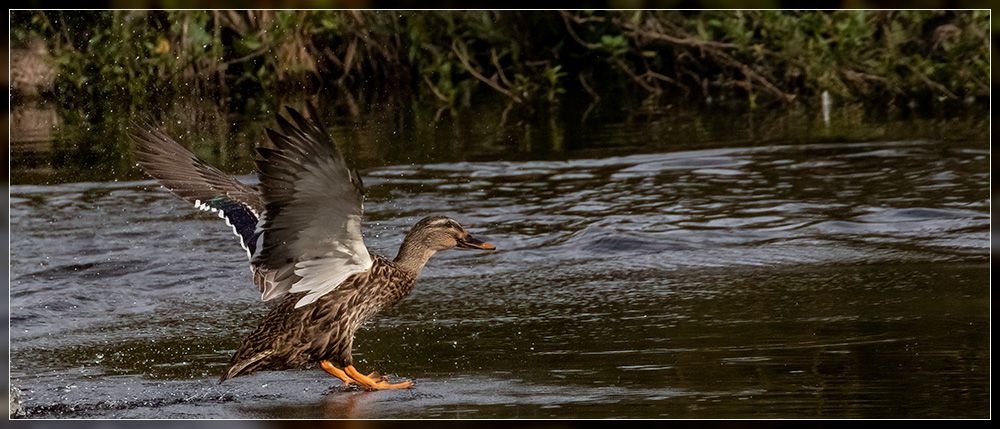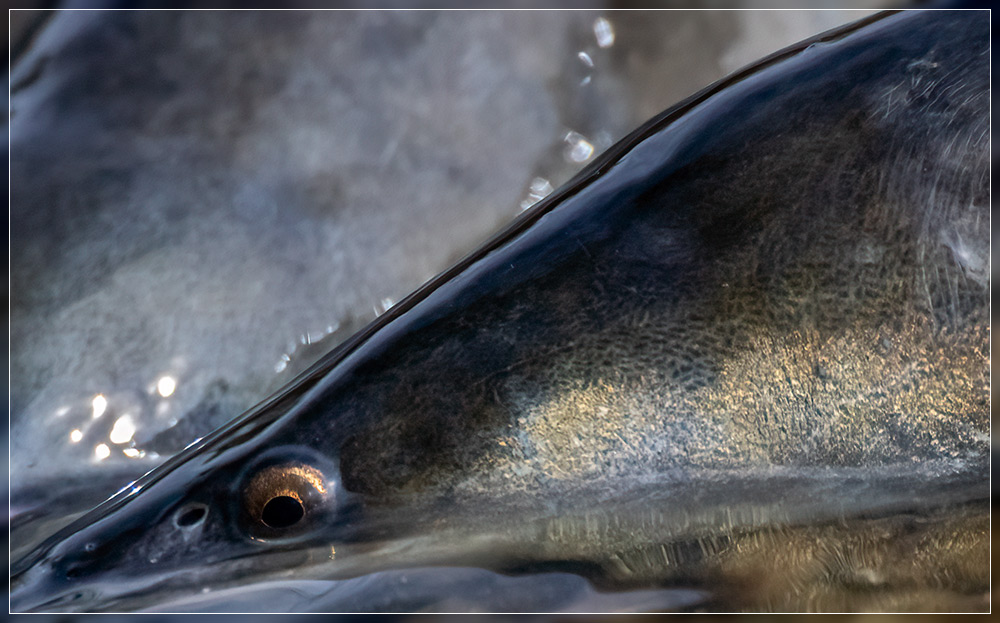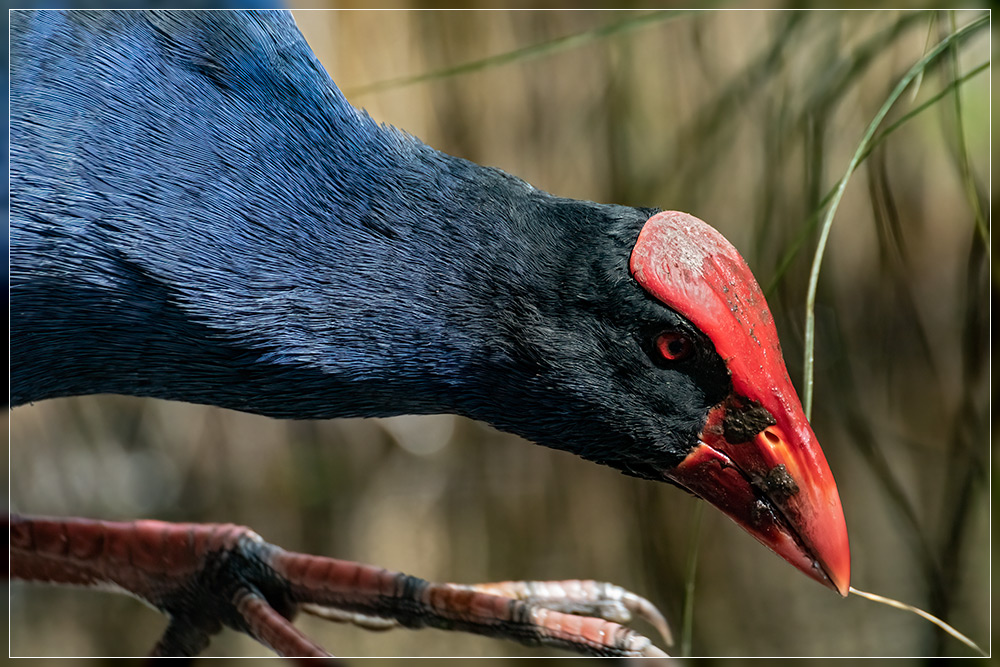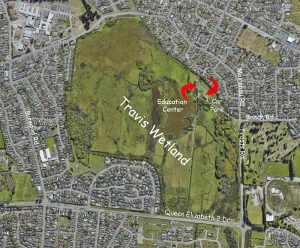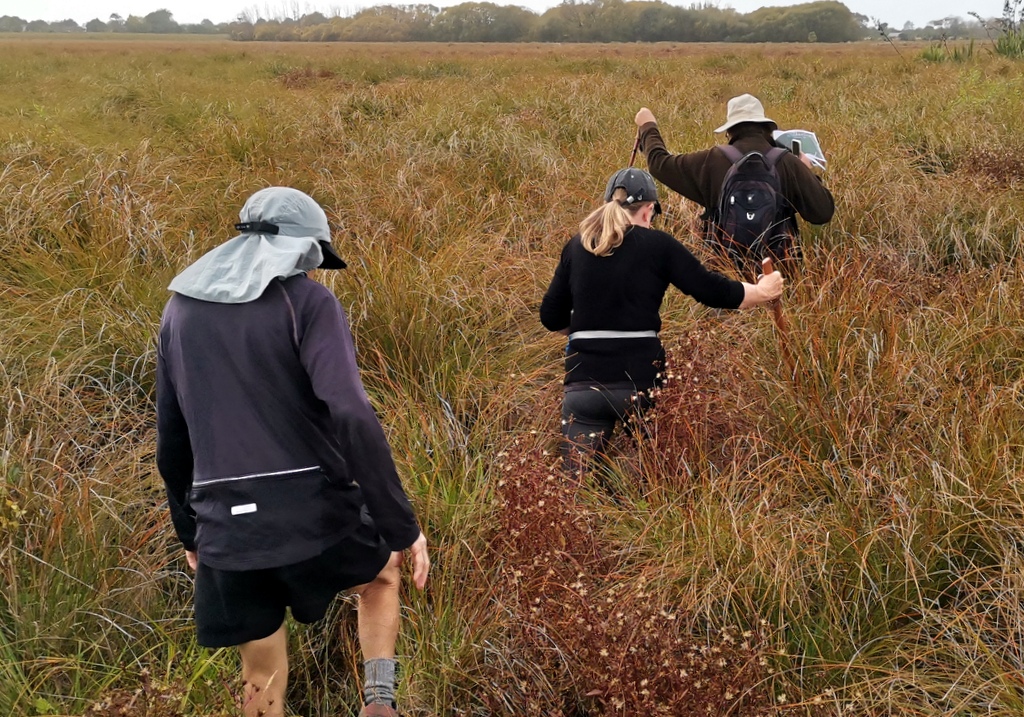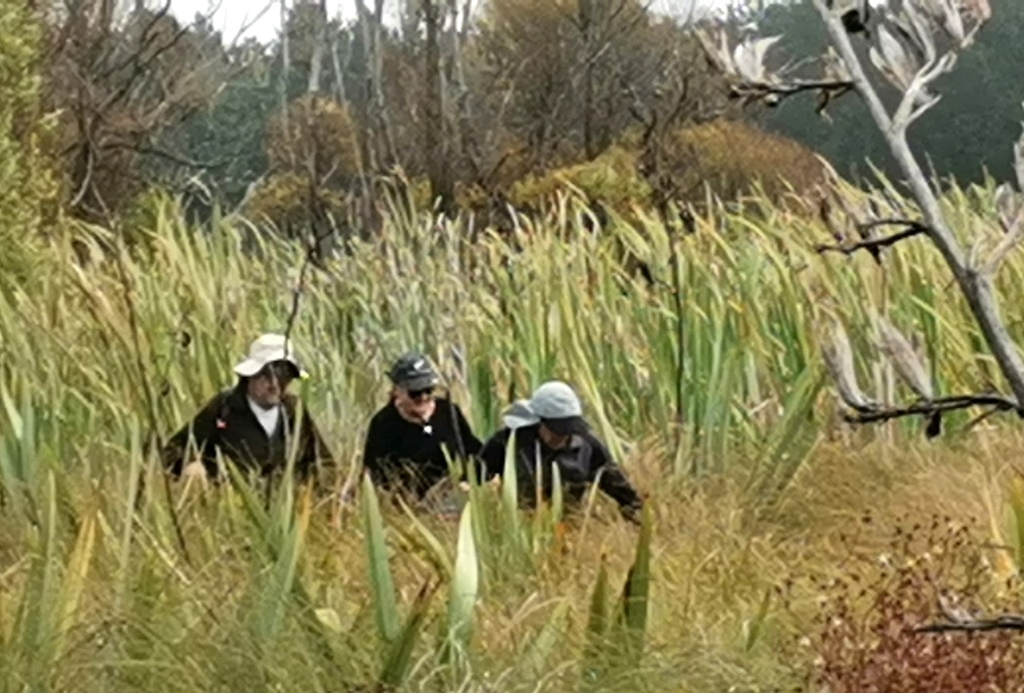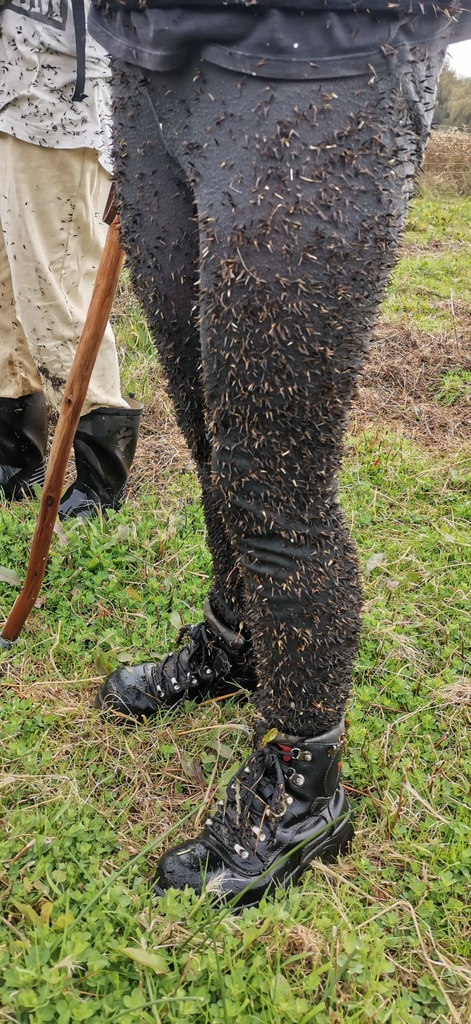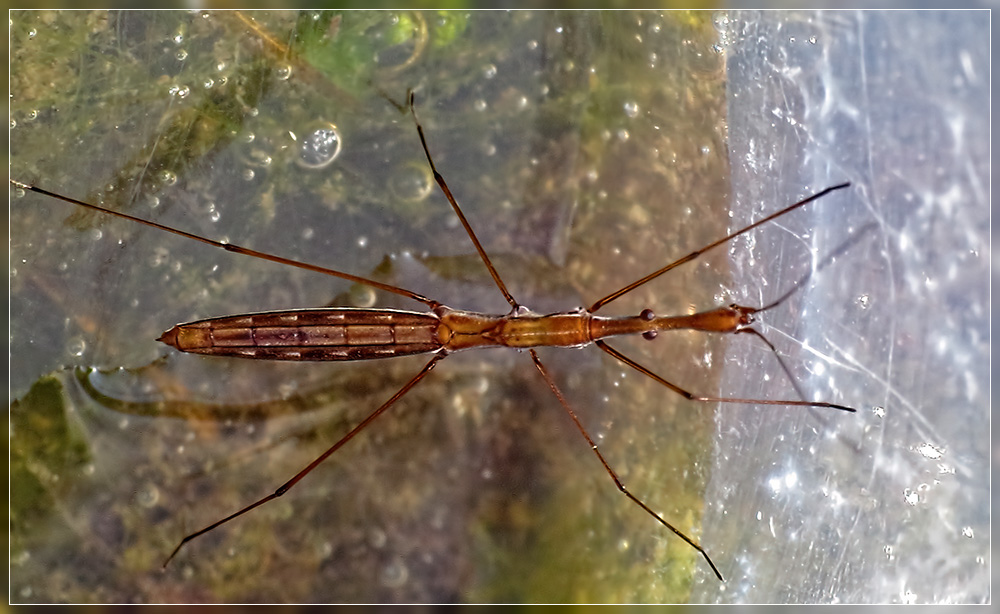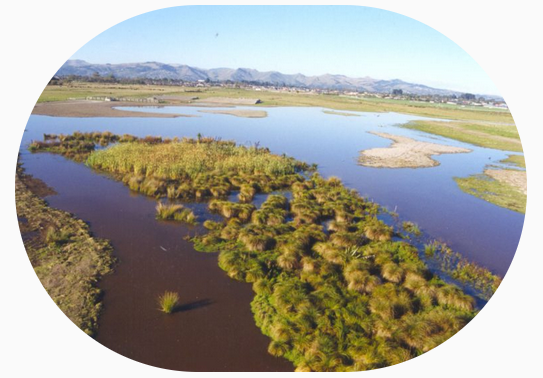All previous newsletters can be found here.
Work Day Reminder, May 20 2023
The next monthly work day will be from 9.00am – noon this coming Saturday.
This month we’ll be planting and releasing plants in the tōtara/mataī forest area.
If you arrive late there will be a notice on the Education Centre door explaining where we have gone.
All tools provided. Gumboots are advised but we can lend you some if you don’t have any. Please bring your own gloves if you can, but we have some of them for loan too.
Latest News
Report on Last Month’s Work Day, 15 April
Eleanor, Sue and ranger John were all away so it didn’t feel like a typical work day, but we pulled together and it worked out all right in the end.
We had been advised that the plants along the Inwoods Rd entrance to Travis needed releasing, so that’s where we headed. It was grey and feeling like Autumn, but not too cold. The plantings there are growing and feeling the benefits of a start to the year that has not been too dry. We didn’t feel the need to do any watering. Bruce took the battery-powered weedeater and cut the long grass making things look very flash. Often when we have worked along this path we have not managed to get to all the plants, but this time an experienced crew worked steadily and were up to the Mairehau Rd fence when it reached knocking off time.
On the walk back along the path we enjoyed seeing the difference that we had made. Back at the Education Centre we enjoyed morning tea inside as it wasn’t the verandah wasn’t its usual warm and sunny.
Thanks to everyone who came to help with the work and contributed to the nourishing morning tea.
Article and image: Dave Evans
Crossing the Swamp
On a sunny but slightly cool day two intrepid Travis Wetland Trust committee members followed the President Colin Meurk into Ōruapaeroa/Travis Wetland to investigate the route of a possible predator proof fence. The Trust is looking to support a feasibility study, which will investigate the feasibility of a fence being placed around part of the wetland. This is proposed to be part of an eco-sanctuary that would also include an area of the red zone between the wetland and the Ōtākaro/Avon River.
For more information about the proposed Waitākiri Ecosanctuary go to the website https://www.ecosanctuary.nz/
Colin has been promoting the idea of a predator proof fence around Ōruapaeroa/Travis Wetland for at least 20 years. In fact you can see an sample of such a fence between the car park and Ed Centre – the technology of predator proof fences has improved immensely since this sample was build.
The trio worked their way carefully across the centre of the wetland managing to avoid the deepest holes (probably through luck more than good management!) However, there were many challenges including negotiating over and around large Carex secta sedges and pulling themselves out of mud that came up well above their knees. Once the central willows were reached (rather like approaching an island in the ocean) it was a reasonably easy traverse back to the walking track.
Note – it is certainly not recommended that people go off the tracks and enter the wetland proper, there many risks for those that do not know the wetland well.
One impediment that was not anticipated was the presence of Beggars Tick (Bidens frondosa). This is a terrible wetland weed and has been present at Travis for a least 15 years. Native species such as C. secta will out compete this weed but it will dominate areas of bare ground and low vegetation. Beggars Tick produces barbed seed which can be easily transported on clothing or by animals. This was certainly one lesson we learnt having to walk through areas of this plant.
Once back at the Ed centre much time was spent removing a coating of seeds from clothing. This weed is certainly not something we want to spread to other areas of the city! Denise’s porcupine leggings were consigned to the rubbish bin!
Article: Denise Ford, images: Phil Teague
The Marvelous World of Hydrometra strigosa: Nature’s Aquatic Skaters
Hydrometra strigosa, commonly known as the water measurer, is a fascinating insect belonging to the family Hydrometridae. They have a characteristic elongated head and body which makes them resemble a yardstick for measuring the water surface. Found in freshwater habitats across the globe, these slender and agile creatures have evolved remarkable adaptations that enable them to navigate the water’s surface with ease.
Measuring around 8-15 millimeters in length, Hydrometra strigosa possesses long, hydrophobic legs that keep them from breaking the water’s surface tension. This adaptation allows them to “skate” across ponds, streams, and even stagnant water bodies without sinking.
Water measurers are predatory insects, using their keen eyesight to spot potential prey, including insects, small aquatic invertebrates, and even mosquito larvae. They capture their quarry by swiftly using their front legs to snatch and pierce their victims.
Communication among water measurers involves surface vibrations produced by leg movements. These vibrations transmit signals to other individuals, potentially conveying information about food sources, territory, or mating intentions.
Hydrometra strigosa’s ability to glide effortlessly across the water, along with their predatory prowess and unique communication methods, make them intriguing subjects of study. Their presence adds a touch of elegance to the aquatic ecosystems they inhabit, reminding us of the diverse and extraordinary adaptations found in the natural world.
Article and Image: Grahame
Travis Wetland Aerial Images
Recently Grahame posted galleries of images of Travis wetland taken at random times over the past 25 years. The images were taken from aircraft, balloon and drone, which indicates the way aerial image technology has changed over the years.
It’s really interesting to see how the restoration of the wetland has advanced – it’s almost unrecognisable in the earliest images.
Follow this link to see the galleries.
Images from Grahame
